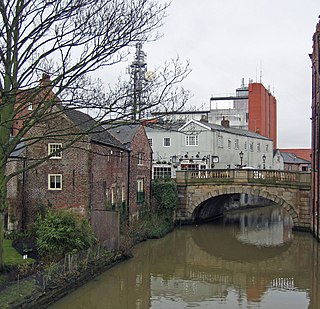
The River Foss is in North Yorkshire, England. It is a tributary of the River Ouse. It rises in the Foss Crooks Woods near Oulston Reservoir close to the village of Yearsley and runs south through the Vale of York to the Ouse in the centre of York. The name most likely comes from the Latin word Fossa, meaning ditch. It is mentioned in the Domesday Book. The York district was settled by Norwegian and Danish people, so parts of the place names could be old Norse. Referring to the etymological dictionary "Etymologisk ordbog", ISBN 82-905-2016-6 dealing with the common Danish and Norwegian languages – roots of words and the original meaning. The old Norse word Fos (waterfall) meaning impetuous. The River Foss was dammed, and even though the elevation to the River Ouse is small, a waterfall was formed. This may have led to the name Fos which became Foss.
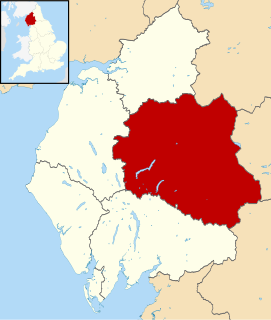
Eden is a local government district in Cumbria, England, based at Penrith Town Hall in Penrith. It is named after the River Eden, which flows north through the district toward Carlisle. Its population of 49,777 at the 2001 census, increased to 52,564 at the 2011 Census. A 2019 estimate was 53,253. In July 2021 it was announced that in April 2023, Cumbria will divide into two unitary authorities. Eden District Council will cease and its functions pass to a new authority, Westmorland and Furness, covering the current districts of Barrow-in-Furness, Eden and South Lakeland.

The River Swale in Yorkshire, England, is a major tributary of the River Ure, which becomes the River Ouse, that empties into the North Sea via the Humber Estuary. The river gives its name to Swaledale, the valley through which it flows.
The Barony of Westmorland also known as North Westmorland, the Barony of Appleby, Appleshire or the Bottom of Westmorland, was one of two baronies making up the English historical county of Westmorland, the other being the Barony of Kendal. Geographically, the barony covered the northern part of the larger county of the same name, and was divided into two wards – East Ward and West Ward. It covered an area similar to that of the Eden District of the new county of Cumbria, although it did not include Penrith, which is now the administrative capital of the district.
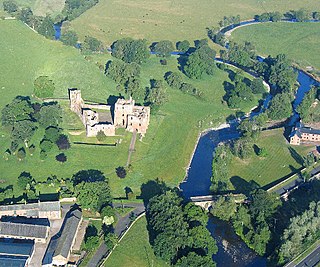
The River Lowther is a small river which flows through limestone rock in Cumbria, England. It is a tributary of the River Eamont which in turn is a tributary of the River Eden which flows into the Solway Firth near Carlisle. The Lowther begins with the confluence of the Keld Gill and the Keld Dub near the village of Keld. It flows north-west until it passes between Bampton and Bampton Grange, before turning north until it flows into the River Eamont close to Penrith.
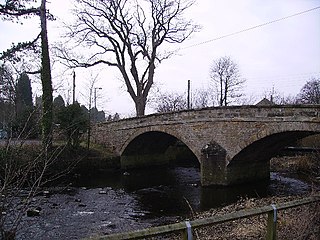
The River Wenning is a tributary of the River Lune, flowing through North Yorkshire and Lancashire.
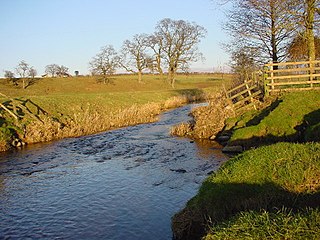
The River Leith is a watercourse in Cumbria, a county of northwestern England.
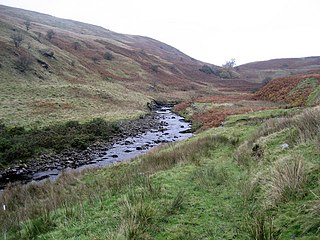
Leck Beck is a watercourse in Lancashire with its source on Crag Hill in Cumbria between Leck Fell and Casterton Fell.
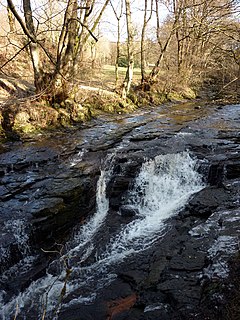
Artle Beck is a minor river of Lancashire.

King's Meaburn is a small village and civil parish in Cumbria, England. It is 5 miles (8.0 km) from Appleby-in-Westmorland and 10 miles (16 km) from Penrith, in the valley of the River Lyvennet. The river flows just to the west of the village, and is crossed by a ford on the road to Newby and Morland. At the 2001 census the parish had a population of 105, increasing to 135 at the 2011 Census.
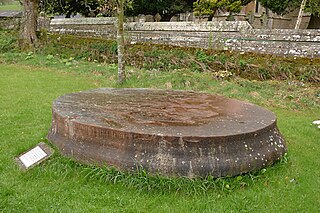
Crosby Ravensworth is a village and civil parish in the Eden district of Cumbria, England. The village is about 4 miles (6.4 km) east of the M6 motorway, and Shap. At the 2001 census the parish had a population of 538, decreasing to 517 at the 2011 Census.
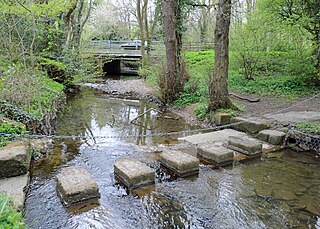
Risedale Beck is a small river that rises on Hipswell Moor, near Catterick Garrison in North Yorkshire, England. The name derives from Old Norse as meaning either Risi's Valley or translated as a valley overgrown with brushwood. Risedale Beck flows eastwards into Catterick Garrison as Leadmill Gill, which in turn flows into Colburn Beck, a tributary of the River Swale. The length of the beck from source to the River Swale is 6.5 miles (10.4 km).
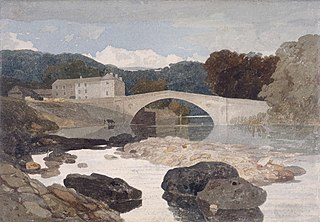
The River Greta is a river in County Durham, England. It is a tributary of the River Tees and flows through the northern part of the old North Riding of Yorkshire. The name "Greta" derives from the Old Norse "Griótá", meaning "stony stream".

Maulds Meaburn is a village in Cumbria, England. It is located in the Lyvennet Valley and Yorkshire Dales National Park and is 13 miles from Penrith. Its origins are connected with the nearby village King's Meaburn.
Great Crosthwaite is a suburb of the tourist town of Keswick in the Allerdale district, in the Lake District, in the English county of Cumbria.
Crosby Ravensworth is a civil parish in the Eden District, Cumbria, England. It contains 53 buildings that are recorded in the National Heritage List for England. Of these, one is listed at Grade I, the highest of the three grades, six are at Grade II*, the middle grade, and the others are at Grade II, the lowest grade. The parish contains the villages of Crosby Ravensworth, Maulds Meaburn, Reagill, the small settlement of Oddendale, and the surrounding countryside. Most of the listed buildings are country houses, smaller houses, and associated structures, farmhouses and farm buildings. The other listed buildings include a church and items in the churchyard, bridges, monuments, a village hall, and a parish boundary stone.

The Orton Fells is an upland area in Northern England, mostly consisting of limestone hills, plateaus and moorlands. Historically in Westmorland, the area lies within the modern county of Cumbria and is bounded by the Lake District to the west, the Eden Valley to the north and east, and the Yorkshire Dales and Howgill Fells to the south. The area mostly falls within the boundaries of the Yorkshire Dales National Park while a small part of the western fells is in the Lake District National Park. The fells are one of 159 National Character Areas defined by Natural England.
Birkbeck Fells is a township located in part of the parishes of Crosby Ravensworth, Orton and Shap in the historic county of Westmorland. It is a large mountainous district, and was described in the mid nineteenth century as containing around thirty scattered houses.














